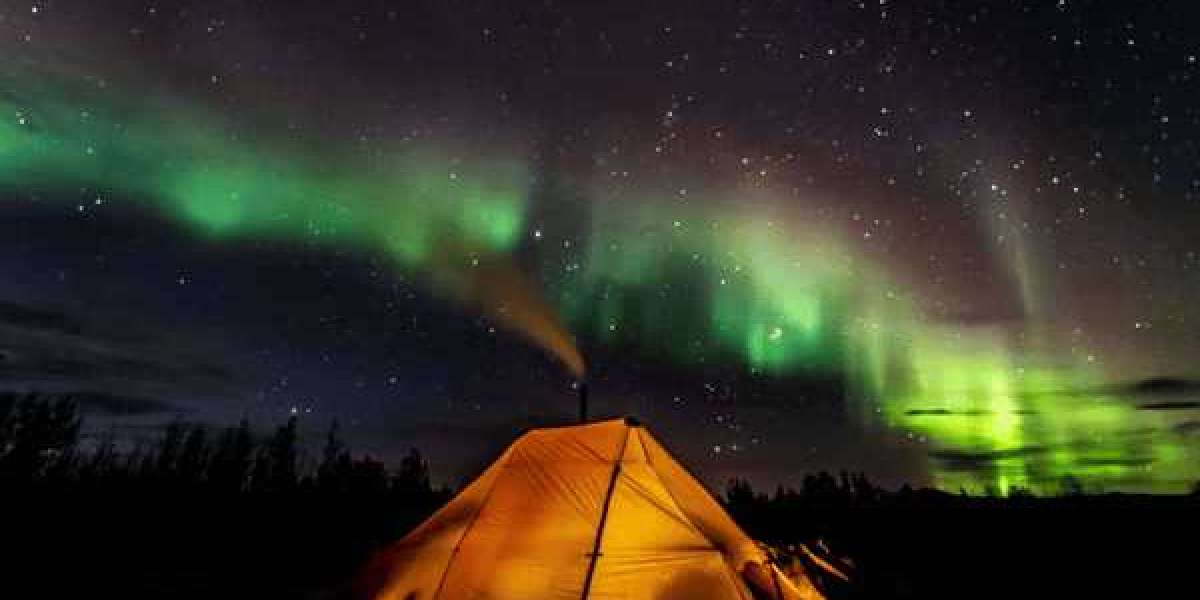When preparing for an outdoor adventure, one of the most crucial pieces of gear you'll need is a tent. Whether you're planning a solo backpacking trip, a weekend camping getaway, or a more extended expedition, selecting the right lightweight tent can make or break your experience. A well-chosen tent will not only keep you protected from the elements but also enhance your comfort and minimize the weight you have to carry.
But with so many options available, how do you pick the best lightweight tent for your specific needs? In this article, we’ll break down the essential factors to consider when choosing a lightweight tent, and provide helpful tips on what to look for to ensure you're getting the most value for your adventure.
- Understand the Weight Categories
When it comes to lightweight tents, the first thing to understand is the difference between a lightweight tent, an ultralight tent, and a standard tent. Here’s a simple breakdown:
- Lightweight Tents: Typically weigh between 3 and 5 pounds. These are designed for backpackers who want to minimize weight while still having some added features and comfort.
- Ultralight Tents: These tents usually weigh under 3 pounds and focus on minimalism. They are ideal for those who are experienced in hiking and need to prioritize weight reduction without compromising too much on shelter.
- Standard Tents: These tents tend to weigh more, around 5 to 8 pounds, and are typically used by car campers who don’t need to worry about carrying their shelter long distances.
The key is to choose a tent that matches your personal needs. If you're planning on hiking with your tent for miles, prioritizing a lighter option will be more beneficial. For shorter hikes or car camping, you may be able to opt for a tent that offers a bit more comfort and space at a slightly heavier weight.
- Consider the Seasonality
The next step is to determine which type of tent is appropriate for the conditions you’ll be facing on your adventure. Tents are generally categorized by their "seasonality," which refers to how well they handle different weather conditions. Here's a look at the typical options:
- 3-Season Tents: These are the most common and versatile choice for lightweight backpackers. They're designed to withstand moderate weather conditions such as light rain, wind, and mild snow. They’re perfect for spring, summer, and fall camping.
- 4-Season Tents: If you're planning on hiking in colder climates or during the winter months, you'll want a 4-season tent. These tents are built to handle harsher weather, including heavy snow and strong winds. However, they tend to be heavier and less breathable, which is something to consider if you're not in extreme weather conditions.
- 2-Season Tents: These tents are designed for very mild conditions and are typically used in warm, dry weather. They're lightweight and often come with mesh panels for increased airflow.
Most backpackers and campers opt for a 3-season tent, as it provides the best balance of weight and protection for most conditions. However, if you anticipate harsher weather, it's worth considering a 4-season tent. You can explore various best lightweight tents designed for both 3-season and 4-season needs.
- Look at Tent Capacity
One of the first things to consider when selecting a tent is the number of people it needs to accommodate. Lightweight tents come in different sizes, usually for one, two, or three people. Here’s a general guideline:
- 1-Person Tents: Perfect for solo hikers who are looking for a compact, ultralight option. They offer minimal space but provide enough shelter for one person and their gear.
- 2-Person Tents: The most common choice for backpackers. A 2-person tent provides enough space for two people and their gear, but it's still compact enough for solo hikers who want a little extra room.
- 3-Person Tents: These offer a bit more comfort and space. While they’re often a bit heavier, they work well for small groups or hikers who need extra storage space.
It's always a good idea to size up. If you're planning to share the tent with someone else, choosing a 2-person tent for two people or a 3-person tent for a bit more comfort can make the experience more enjoyable.
- Evaluate the Material Quality and Durability
The materials used in the construction of the tent will play a significant role in how durable and weather-resistant it is. Generally, you’ll want to prioritize tents with durable fabrics and quality coatings, especially for lightweight models, which may sacrifice some sturdiness for reduced weight. Here are key materials to consider:
- Tent Body Fabric: Most lightweight tents use ripstop nylon or polyester. Ripstop nylon is stronger and more tear-resistant but can absorb more water. Polyester tends to be more weather-resistant and retains its shape better in humid conditions.
- Tent Floor Fabric: The floor material is critical because it provides protection from ground moisture and abrasion. Look for tents with a durable, waterproof floor, often made from thicker materials like 70D nylon.
- Poles: Most lightweight tents use aluminum poles for their balance of strength and low weight. Carbon fiber poles are even lighter but tend to be more fragile and expensive.
If you’re planning to use the tent in various weather conditions, look for a tent with reinforced materials in key areas like the floor and poles.
- Look for Easy Setup and Ventilation
After a long day of hiking, the last thing you want to deal with is a complicated tent setup. Look for lightweight tents that are easy to pitch, ideally with color-coded poles or quick-pitch designs. The quicker you can set up camp, the more time you’ll have to relax and enjoy the outdoors.
Additionally, ventilation is key, especially for lightweight tents with limited space. Ensure your tent has proper mesh panels and adjustable vents to prevent condensation buildup, which can make for a damp, uncomfortable night’s sleep.
- Consider Additional Features
When selecting your tent, consider any extra features that might enhance your experience. Some tents come with added pockets for gear organization, vestibules for storing backpacks, or integrated rain flies for additional weather protection. While these features add weight, they can also improve the overall comfort of your setup.
Conclusion
Choosing the best lightweight tent involves balancing factors like weight, durability, weather resistance, and comfort. By considering the seasonality, capacity, materials, and features that align with your specific needs, you can find the perfect tent for your next adventure. And remember, a great lightweight tent doesn’t just save weight—it saves space, improves comfort, and helps you maximize your time enjoying the outdoors.
If you're still unsure, check out a curated list of best lightweight tents for more inspiration on finding your perfect match. Happy hiking!







